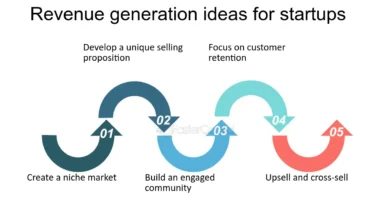Exploring Python Web Development Example Code: Best Practices”

Let’s dive into a journey through Exploring Python Web Development example code. Python has become a powerhouse in the world of web development, with frameworks like Django and Flask leading the way. In this comprehensive blog, we’ll delve into the realm of Python web development, exploring example code and best practices to help you master the art of building robust web applications.
Python web development:
Python web development exemplifies a dynamic and versatile approach to crafting powerful and scalable web applications. In this blog, we embark on a journey into the heart of Python web development, unraveling its intricacies through example code and delving into the best practices that shape robust web applications.
Understanding Python Web Development:
Python web development is a dynamic field that empowers developers to create scalable and feature-rich web applications. Whether you’re a seasoned developer or a beginner, the versatility of Python makes it an ideal choice for crafting everything from simple websites to complex web platforms.
Key Frameworks: Django and Flask:
Two key players in the Python web development landscape are Django and Flask. Django, a high-level web framework, provides an all-in-one solution for web development, including an ORM, admin panel, and built-in authentication. On the other hand, Flask, a microframework, offers flexibility and simplicity, allowing developers to choose components based on project requirements.
The Python Advantage in Web Development:
Python’s popularity in web development stems from its readability, simplicity, and rich ecosystem of frameworks. This language offers developers a spectrum of tools, with two prominent players being Django and Flask.
Example Code for Python Web Development:
Let’s dive into some Python Web Development example code, snippets to illustrate the power and simplicity of Python web development.
Hello, World with Flask:
from flask import Flaskapp = Flask(__name__)@app.route('/')def hello_world():return 'Hello, World!'
This minimalistic Flask code demonstrates the classic “Hello, World!” example, highlighting the simplicity of setting up a basic web application.
Django: A High-Level Web Framework:
Django, a high-level web framework, embodies a batteries-included philosophy. With Django, developers benefit from an integrated ORM, an admin panel, and built-in authentication. Let’s explore a snippet showcasing the creation of a basic model:
pythonCopy codefrom django.db import models
class BlogPost(models.Model):
title = models.CharField(max_length=100)
content = models.TextField()
pub_date = models.DateTimeField('date published')
In this Python Web Development example code, we define a Django model for a blog post, complete with title, content, and publication date fields.
Flask: A Microframework for Flexibility:
On the other end of the spectrum is Flask, a microframework that emphasizes simplicity and flexibility. Here’s a classic “Hello, World!” example in Flask:
pythonCopy codefrom flask import Flask
app = Flask(__name__)
@app.route('/')
def hello_world():
return 'Hello, World!'
This concise code highlights Flask’s minimalist approach, making it an excellent choice for small to medium-sized projects.
Practical Examples for Python Web Development:
Let’s delve into practical Python Web Development example code
- User Authentication with Flask-Login:
pythonCopy codefrom flask import Flask, redirect, url_for
from flask_login import LoginManager, UserMixin, login_user, login_required, logout_user
app = Flask(__name__)
login_manager = LoginManager(app)
class User(UserMixin):
pass
@login_manager.user_loader
def load_user(user_id):
# Logic to load a user from a database
return User()
@app.route('/login')
def login():
user = User()
This Python Web Development example code demonstrates user authentication with Flask-Login, enhancing the security of your web application.

2. RESTful API with Flask-RESTful:
pythonCopy codefrom flask import Flask
from flask_restful import Resource, Api
app = Flask(__name__)
api = Api(app)
class HelloWorld(Resource):
def get(self):
return {'hello': 'world'}
api.add_resource(HelloWorld, '/')
This snippet showcases the creation of a simple RESTful API using Flask-RESTful, enabling seamless communication between different components of your application.
Best Practices in Python Web Development Example Code:
As we explore example code, it’s essential to adhere to best practices for a seamless development experience.
- Use Virtual Environments:
- Always create a virtual environment for your project to isolate dependencies and maintain project-specific package versions.
- Follow the DRY Principle (Don’t Repeat Yourself):
- Reuse code whenever possible to avoid redundancy and make your codebase more maintainable.
- Implement Proper Error Handling:
- Create meaningful error messages and implement error handling to provide a smooth user experience.
- Optimize for Performance:
- Optimize database queries, use caching when necessary, and employ techniques like lazy loading for enhanced performance.
- Secure Your Web Application:
- Implement secure coding practices, validate user inputs, and use tools like SSL/TLS for secure communication.
“Unlock success in Python coding interviews with expert strategies, valuable tips, and unique exercises. Enhance your skills and excel in technical interviews with our comprehensive guide to mastering Python coding challenges. Get ready for success in every coding interview scenario!”
Web development examples in Python:

Whether you’re a novice or a seasoned developer, these examples will provide insights into leveraging Python for creating compelling web applications.
1. Creating a Basic Web Page with Flask:
Flask, a microframework for Python, is renowned for its simplicity. Let’s start with a classic example of creating a basic web page using Flask.
pythonCopy codefrom flask import Flask, render_template
app = Flask(__name__)
@app.route('/')
def home():
return render_template('index.html')
if __name__ == '__main__':
app.run(debug=True)
These Pythonweb development examples code offer a glimpse into the diverse capabilities of the language. Whether you choose the simplicity of Flask or the all-encompassing features of Django, Python empowers developers to create dynamic and scalable web applications. As you explore these examples, consider how Python can be tailored to meet the unique requirements of your next web development project. Happy coding!
2. Building a To-Do List Application with Flask:
Let’s take Flask a step further by creating a basic To-Do list application. This example introduces concepts like routing and working with forms.
pythonCopy codefrom flask import Flask, render_template, request, redirect
app = Flask(__name__)
tasks = []
@app.route('/')
def index():
return render_template('todo.html', tasks=tasks)
@app.route('/add', methods=['POST'])
def add():
task = request.form.get('task')
tasks.append(task)
return redirect('/')
if __name__ == '__main__':
app.run(debug=True)
This example demonstrates how Flask handles form submissions and dynamically updates the To-Do list on the web page.

Conclusion: In this exploration of Python web development example code and best practices, we’ve only scratched the surface of what’s possible. Whether you’re building a personal blog with Flask or a comprehensive web application with Django, Python’s versatility and the wealth of frameworks make it an exciting journey for developers.
As you venture into the world of Python web development, remember to continuously expand your knowledge, stay updated on the latest trends, and, most importantly, enjoy the process of creating dynamic and powerful web applications with Python. Happy coding!
See Also:
- Unveiling the Distinctions: Web Crawler vs Web Scrapers
- How to Make Money with Web Scraping Using Python
- How to Type Cast in Python with the Best 5 Examples
- Best Variable Arguments in Python
- 5 Best AI Prompt Engineering Certifications Free
- 5 Beginner Tips for Solving Python Coding Challenges
- Exploring Python Web Development Example Code
- “Python Coding Challenges: Exercises for Success”



